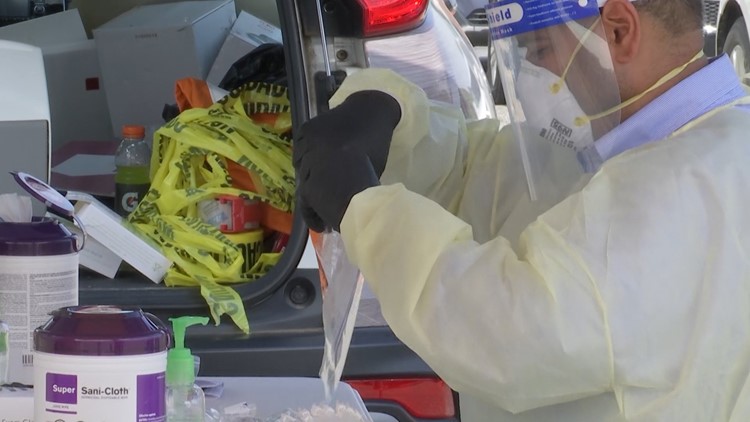MONTGOMERY, Ala. — The Alabama Dept of Health has updated the way it reports cases of COVID-19.
Previously, confirmed cases and presumed cases were reported separately. Now they are reported together.
Several things led to this change, including how laboratories report test results, what they report, and the kinds of testing being done.
In the graphic below, you can see a TOTAL CASES number. This previously read "Laboratory Confirmed Tests". The main dashboard still shows the confirmed and probable cases broken out and it also includes a breakdown of the types of tests performed.
The main COVID-19 dashboard previous listed two separate numbers under their
Why does laboratory reporting matter? Why did this change the numbers?
What was reported and when are important. When new labs, or labs that had not previously reported numbers, report, their data may include information from older cases.
In a statement on Sept. 25, ADPH explained:
The Alabama Department of Public Health (ADPH) receives reports of testing for SARS-CoV-2 from commercial and clinical laboratories as well as our own Bureau of Clinical Laboratories (BCL). While ADPH has long term reporting relationships with many labs in Alabama and other states, new labs have begun to provide testing for SARS-CoV-2 during the COVID-19 pandemic.
There have been instances where ADPH was not aware of some of these laboratories, and these labs were not familiar with mandatory reporting of notifiable diseases. We had two large entities transmit data, including antigen tests, which increased our daily numbers of cases, including probables, for September 24. When ADPH becomes aware of a new lab performing SARS-CoV-2 testing, ADPH educates the labs regarding uploading data in a timely, accurate electronic format.
As these labs were not reporting to ADPH until they understood the requirement, their data contains older reports which increases case numbers. ADPH continues to make all efforts possible to identify new labs and bring them into the electronic reporting process in order to capture the positive and negative labs for case investigation and data accuracy.
What are laboratories reporting? How are COVID-19 contacts and cases being tracked?
Antigen diagnostic testing is allowed in Alabama. According to ADPH, more healthcare providers, including physicians offices, urgent cares, and some emergency rooms, are using antigen testing, leading to an increase in probable cases. Confirmed and probable cases are tracking in exactly the same way. ADPH has reported both confirmed and probable cases since June, but kept the numbers separate on reports. Now they are reported together.
ADPH explains:
As science advances with SARS-CoV-2 and COVID-19, the Alabama Department of Public Health (ADPH) strives to provide the most up-to-date representation of data for our state. ADPH has reported both confirmed and probable cases of COVID-19 since June, 2020. Confirmed and probable cases are investigated and contacts identified in the same manner.
As more antigen diagnostic testing has been approved under emergency use authorized by FDA, the number of probable cases in Alabama continues to increase. More healthcare providers, including physicians offices, urgent cares, and some emergency rooms, are using antigen testing. ADPH has revised some charts and graphs on its dashboard to capture the most current situation for COVID-19 in Alabama.
What's the difference between confirmed and probable cases of COVID-19?
Confirmed cases of COVID-19 represent persons who have positive PCR tests, whether symptomatic or not. Probable cases of COVID-19 currently represent two groups.
ADPH explains:
One group categorized as "probable cases" is persons who are epidemiologically linked to a case (exposed to a person who had COVID-19), have symptoms compatible with COVID-19, and do not have diagnostic tests performed due to individual decisions or other reason. Another group of persons categorized as probable cases are persons who have had rapid antigen tests performed. Rapid antigen tests, while diagnostic tests, are counted as probable due to antigen tests showing lower ability to determine if a person has SARS-CoV-2.
In other words, point of care antigen tests are less sensitive and show more false negative results than laboratory performed PCR tests. Point of care antigen testing can be useful where there are high rates of SARS-CoV-2. As more rapid point of care testing is performed for SARS-CoV-2, ADPH is working to remind entities to report all testing done, both positive and negative, to ensure that ADPH testing numbers reflect accuracy of percent positive testing.
See statewide and county-by-county COVID-19 numbers here.
More data, including demographic information on cases, is available on the ADPH Data and Surveillance page.



